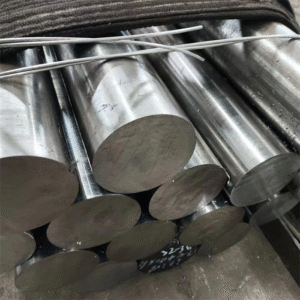Get in touch with us
Leave a message
Our precision-engineered iron nickel alloys deliver exceptional dimensional stability across varying temperatures. Featuring industry-standard Invar 36 (4J36) and specialized low expansion formulations, these remarkable alloy nickel and iron compositions maintain near-zero thermal expansion up to their specific melting point. The unique nickel iron alloy properties make them ideal for precision instruments, electronics, and aerospace applications where dimensional consistency is critical. Our advanced manufacturing ensures consistent invar material performance for your most demanding applications.

Nickel Alloy traces its roots to the late 19th century when nickel’s corrosion resistance piqued industrial interest. 1905 Albert Marsh blended nickel with chromium, creating Nichrome—a heat-resistant nickel alloy. The 1920s brought Hastelloy, followed by Inconel and Monel in the mid-20th century, driven by aerospace and marine demands. Today, nickel-based superalloys like Inconel 718 power cutting-edge applications, building on a century of metallurgical innovation.
| Type | Composition (Key Elements) | Characteristics | Common Grades |
|---|---|---|---|
| Monel | Ni (65-70%), Cu (20-30%) | Seawater corrosion resistance | Monel 400, K-500 |
| Inconel | Ni (50-70%), Cr (15-25%) | High-temp strength, oxidation | Inconel 625, 718 |
| Incoloy | Ni (30-45%), Fe (20-40%) | Acid resistance, thermal stability | Incoloy 825, 800 |
| Hastelloy | Ni (50-60%), Mo (15-30%) | Extreme corrosion resistance | Hastelloy C276, C22 |
| Property | Behavior | Key Elements | Notes |
|---|---|---|---|
| Corrosion Resistance | Superior in acids, saltwater | Ni, Mo, Cr | Hastelloy excels in HCl |
| Oxidation Resistance | Stable to 982°C | Cr, Fe | Inconel for high temps |
| Magnetism | Mostly non-magnetic | Ni dominance | Varies with Fe content |
| Heat Resistance | Good to 538-1200°C | Mo, Ni | Grade-specific limits |
| Material | Tensile Strength (MPa) | Yield Strength (MPa) | Hardness (HB) | Elongation (%) | Density (g/cm3) |
|---|---|---|---|---|---|
| Inconel 625 | 827 - 1034 | 414 - 655 | ≤ 290 | ≥ 30 | 8.44 |
| Hastelloy C276 | 690 - 930 | 283 - 400 | ≤ 220 | ≥ 40 | 8.89 |
| Monel 400 | 480 - 600 | 172 - 345 | 110 - 150 | ≥ 35 | 8.8 |
| Incoloy 825 | 586 - 896 | 241 - 550 | ≤ 200 | ≥ 30 | 8.14 |
| 316 Stainless | 515 - 690 | 205 - 290 | ≤ 217 | ≥ 40 | 8 |
| Titanium Gr 5 | 900 - 1100 | 830 - 1000 | 334 | ≥ 10 | 4.43 |
Nickel Alloy shines across industries:
Nickel Alloy drives performance across industries.
Despite its strengths, Nickel Alloy isn’t flawless:
Nickel Alloy resists corrosion effectively:
Welding Nickel Alloy requires precision:
These techniques preserve Nickel alloy properties.




Professional manufacturer of premium specialty alloys, offering stainless steel, Hastelloy, nickel-based alloys and processing services. Delivering superior metallurgical solutions for aerospace, petrochemical, marine engineering and other demanding industries.
©2025 alloy-materials.com COPYRIGHT ALL RIGHT RESERVED.